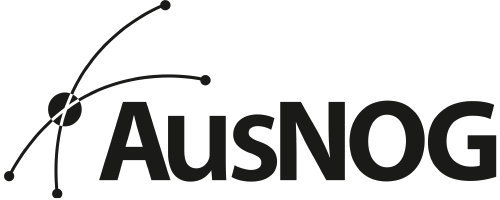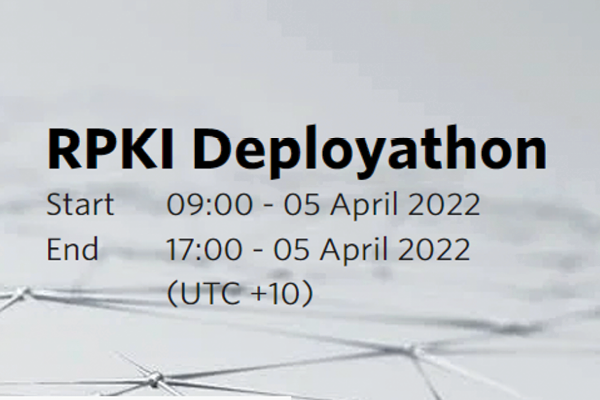IAA Newsletters
We are extremely pleased to announce and welcome the approved members of our new Public Policy Advisory Panel! We are very fortunate to have a diverse range of professionals coming from all sorts of different backgrounds including small-medium regional CSPs, international policy, government bodies and large CSPs.
Meet the members:
Eric Ericson
Eric brings extensive experience in the telco sector, and in his current role as the Regulatory Affairs Advisor at Aussie Broadband Ltd, he is actively involved in engaging with regulators in this space.
Pablo Hinojosa
Pablo has had a long history working in the development of policies and frameworks for the Internet in his day job with APNIC. In particular, he brings a regional (Asia-Pacific) and broader international perspective on internet policy.
Holly Raiche
Holly brings a thorough knowledge of the legal and policy framework for the telco sector, having had extensive experience working in advocacy across the sector. Holly continues to teach communications law at university and sits on numerous ICANN and other policy panels.
Naomi Wolfe
Naomi comes with experience working in both the public and private sectors. Having previously worked for the Australian Government in various policy and enforcement roles. Naomi is now at Cloud Earth Pty Ltd where she is the Assistant Director.
Andrew Yager
Andrew’s background consists of many years in policy review and development in the telco sector. He currently works at Real World Technology Solutions where he drives most of their policy reviews and government submissions.
We would like to say a big ‘thank you’ to all of our new panellists for their time and effort, and look forward to their inputs into our policy development.
Read More
We’re looking for two PHP developers to build and maintain the new IAA Member Services Portal in addition to business as usual tasks. If you or someone you know is an experienced developer with PHP and Laravel framework knowledge, combined with a deep knowledge of JavaScript, CSS and HTML and can meet the knowledge and experience components required for these roles, then head over to our Careers Page to learn more about the roles or to apply.
Read More
We look forward to welcoming the sponsored attendees and Perth based staff attending the inaugural IAASysters@AusNOG program! We’re very excited about this as it’s designed to support women in the Internet industry. Starting with our workshop on Tuesday 5th April, attendees will acquire technical and presentation skills and knowledge, and complete a career planning session to help them navigate their future careers. Prominent industry experts will deliver all three sessions to ensure the attendees get the best guidance and advice.
Attendees will also attend the AusNOG Conference to ensure they maximise their technical learning experience and take advantage of all the great networking opportunities that come from it! So, if you see an IAASysters@AusNOG attendee, please make them feel welcome and accepted – they won’t be hard to spot as they will be the select few wearing the IAASysters@AusNOG t-shirt!
We would also like to take this opportunity to thank our valued sponsors who have supported this program. Without the support and generosity of AusNOG, Vocus and Amazon Web Services, this program would not be as enriching as it is, and it’s great to see prominent industry players join us in our effort to cultivate a more inclusive Internet industry.
For more information about this program, please visit the IAASysters@AusNOG information page.

Read More
Tickets are sold out for the annual AusNOG Conference happening next week! The programme has been released so you can start planning for the sessions you would like to attend. This year, our engineers will be taking part in the RPKI Deployathon, where they will be guided by the facilitators and will discuss/debate and work on properly signing ROAs for your address space, installing and configuring different RPKI validators, connecting routers to the validators, configure infrastructure to implement ROV and more.
We have a booth again this year, so please stop by for a chat and pick up some swag while you’re there! With a couple of fun things to do at our booth, it should be a nice break for you all between sessions.
Read More
This year’s RPKI Deployathon builds on the previous Deployathons held at APNIC48 (Chiangmai) and APRICOT2020 (Melbourne).
Event details
Date: Tuesday 5th April
Time: 9.00am – 5.00pm AEST
Location: Cliftons Sydney, 13/60 Margaret Street, Sydney, NSW, 2000
This event will be face-to-face guided by facilitators; participants will discuss/debate and work on:
- properly signing ROAs for your address space (based on what you announce/accept in BGP);
- install and configure different RPKI validators (diff the validated outputs and under the hood defaults?);
- connect routers to the validators (multi-vendor infra);
- configure infrastructure to implement ROV (to drop or not to drop?).
Participants will analyse the outcomes of each step and summarise any improvements in operational processes to achieve these outcomes. The summaries/findings of each activity will be presented as a lightning talk at AusNOG (PC and time permitting).
Participants will work with different validators, including Routinator, FORT, rpki-client, and rpki-prover, with accompanying routing implementations for IOS-XE/XR, JunOS, SR-OS, EOS, and others (BIRD, FRR).
Participants must meet the pre-requisites to join, and there is a maximum number of 50 attendees, so don’t delay your registration! For more information, please see the APNIC Academy Events page.
Read More
Completed Submissions
2022 Broadband Speed Claims Guidance Consultation | ACCC | 25 February 2022
The ACCC’s proposed updated guidance includes six principles regarding expectations for network operators, RSPs and consumers, and is part of ongoing periodic reviews by the Commission.
We responded to the Commission regarding its 2022 Broadband Speed Claims Guidance. On the whole, we expressed our support for the principles driving the Industry Guidance but asked for greater clarification, and guidance to be provided, particularly for our members who are smaller RSPs.
Review of the Security Legislation Amendment (Critical Infrastructure Protection) Bill 2022 | Parliamentary Joint Committee on Intelligence and Security | 1 March 2022
Following consultations which closed in early February, the SLACIP Bill has been submitted to the PJCIS for review. We submitted our response to the PJCIS’ Inquiry into the Bill and particularly noted our grave concerns with the extreme speed at which the Department of Home Affairs is pushing the Bill, despite its inclusion of some potentially very problematic powers that will see businesses being required to download government software.
Following our response, we were invited by the PJCIS to attend and provide evidence to their public hearing into the Review of the SLACIP Bill on 16 March, where we reiterated our concerns at the hearing. Their report on this has been released, and we are now assessing its impact.
Code C661:2022 Reducing Scam Calls and Scam SMS | Communications Alliance | 11 March 2022
In our response to the updated Industry Code which expanded the code’s scope to include scam SMS, we expressed our general support for the draft code, but also raised some issues. In particular, we advised against the requirement to block originating numbers outside a CSP as it could greatly impede competition in the telco sector. We believe it should be sufficient that members validate the number ownership before routing given the dominance of certain players in the 13— number space.
Open Submissions
Security information obligations for carriers and eligible carriage service providers | Department of Infrastructure, Transport, Regional Development and Communications | 29 March 2022
DITRDC is requesting consultation on new Rules for carriers and carriage service providers to apply equivalent security measures for the telecommunications sector as under the Security Legislation Amendment (Critical Infrastructure) Act 2021 for other sectors. Under these new rules, essentially all carriers and carriage service providers will be subject to the obligations which include providing information to the Secretary of Home Affairs to be kept on a register, as well as mandatory incident reporting scheme.
Consumer Data Right rules and standards design paper for telecommunications sector | Department of Treasury | 29 March 2022
The Treasury is seeking input into the Rules and Standards that have been developed following the sector’s designation in December 2021, with which we were also involved.
Digital Platform Services Inquiry | ACCC and others | 1 April 2022
A coalition of regulatory bodies is embarking on an inquiry into Digital Platform Services. This inquiry is part of the ACCC’s five-year Digital Platform Inquiry and follows the release of its fifth interim report. The Discussion Paper considers and invites submissions as to whether the current competition and consumer protection laws are sufficient to address the harms identified in the inquiry.
Read More
Last year, we launched our IAASysters@AusNOG Program. Based on the international systers.org and systers@IETF programs, this program helps to support and enable women to access the valuable technical content and business networking opportunities that come from the Australian Network Operators Group (AusNOG) conference.
Sponsored attendees will receive:
- Economy airfares to Sydney and three nights accommodation for interstate participants
- Admission to the AusNOG conference (April 6 and 7) – sponsored by AusNOG
- Admission to the IAASysters@AusNOG workshop (April 5)
- A one-year complimentary Professional membership to IAA – subject to Board approval.
An essential part of our program is the IAASysters@AusNOG workshop. This is a one-day event; offering targeted technical and presentation skills training in addition to a career planning session delivered by industry professionals, designed to help you advance your career.
Whether you are at the beginning of your career, yet to begin or starting again, the IAASysters@AusNOG program offers a variety of opportunities designed to boost your knowledge, skills, and confidence.
Details for the IAASysters@AusNOG workshop:
Date: Tuesday, 5 April 2022
Time: 9:00am AEST – 5:00pm AEST
Location: The Fullerton Hotel, Sydney
This program is proudly sponsored by AusNOG and Amazon Web Services, and we would like to express our appreciation of their support.
For more information, please visit the IAASysters@AusNOG information page on our website.
Program Sponsors
The IAASysters@AusNOG Program is proudly brought to you with the help of our sponsors.

Read More
The Australian Institute of Office Professionals (AIOP) is hosting a virtual webinar, and our wonderful Executive Officer and Company Secretary – Kitty Hibble – will be presenting! From Enthusiasts to Critical Infrastructure will take you through the journey of the growth of the Internet in Western Australia and a little known but crucial part of its infrastructure – Internet Exchange Points.
Kitty Hibble will show how the association grew from a bunch of people with vision, to now being a fundamental – even critical – part of the Internet today and illustrate some of the organisational changes that had to occur to support this evolution.
Event details:
Date: Tuesday 15th March 2022
Time: 10:00am AWST
Location: Online
If you would like to attend, please email us at events@internet.asn.au to access your exclusive IAA member discount code!






